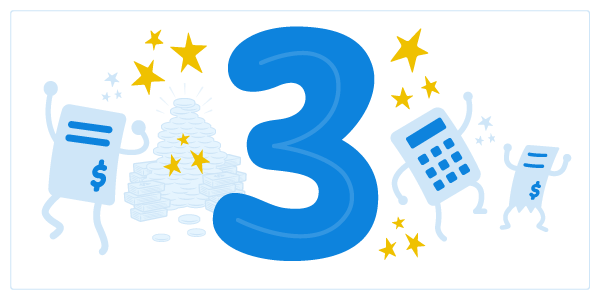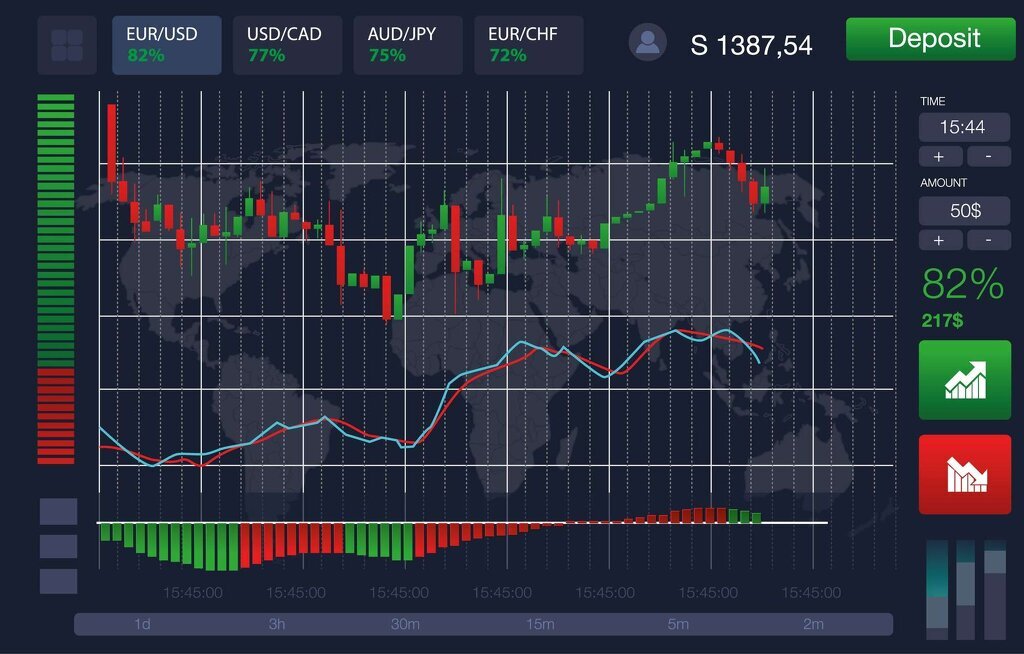Contents
Ninety-five percent of data values will fall within two standard deviations (2 x 2.87 in our example), and 99.7% of all values will fall within three standard deviations (3 x 2.87). In this case, the values of $1 to $10 are not randomly distributed on a bell curve; rather. Despite this limitation, traders frequently use standard deviation, as price returns data sets often resemble more of a normal distribution than in the given example. Volatility is a statistic that measures the differences between returns of an investment over a given time period – a greater difference means greater volatility. Generally, the higher the volatility, the more risky an investment is considered to be. Note that volatility refers both to positive and negative moves, but the nature of markets is such that negative moves typically occur more dramatically than positive moves .
Our systems have detected unusual traffic activity from your network. Please complete this reCAPTCHA to demonstrate that it’s you making the requests and not a robot. If you are having trouble seeing or completing this challenge, this page may help. If you continue to experience issues, you can contact JSTOR support. Over a period of one year, Company A’s shares were considerably more volatile than Company B’s.
This is because there is an increasing probability that the instrument’s price will be farther away from the initial price as time increases. In statistics, heteroskedasticity happens when the standard deviations of a variable, monitored over a specific amount of time, are nonconstant. The standard deviation is a statistic measuring the dispersion of a dataset relative to its mean and is calculated as the square root of the variance.
We also reference original research from other reputable publishers where appropriate. You can learn more about the standards we follow in producing accurate, unbiased content in oureditorial policy. Divide the sum of the squared deviations (82.5) by the number of data values. Full BioPete Rathburn alvexo review is a freelance writer, copy editor, and fact-checker with expertise in economics and personal finance. Divide the squared differences by the total number of prices in the set . With a disciplined approach, you can learn to manage volatility for your benefit—while helping you minimize risks.
How do you trade with volatility?
Trade Volatility with Options
When using options to trade volatility, a trader could buy a call option and a put option with the same strike price and expiration date. If the underlying instrument experiences a large price-move, either the put or call option will become in-the-money and return a profit.
Whatever the method, it’s the volatility that drives a trader’s PnL and all the price action that takes place. Like all aspects of financial markets, and everything else in the world, there are both many advantages and disadvantages to extreme volatility. Here are the essential pros and cons of volatility, as well as how to avoid or take advantage of them.
Get Schwab’s view on market volatility
While trading highly volatile financial instruments can be very lucrative, traders need to pay attention to proper risk management when doing so. Using stop-losses is mandatory when trading on high volatility in order to have potential losses under control and avoid a margin call. While volatility is usually measured by the variance or standard deviation in statistics, we’ll describe a more practical approach for traders. In the Forex market, traders can measure volatility by using volatility indicators such as Bollinger Bands or the Average True Range. Volatility is neither good nor bad only, it is just a natural part of the markets and their cycle.

Implied volatility , also known as projected volatility, is one of the most important metrics for options traders. As the name suggests, it allows them to make a determination of just how volatile the market will be going forward. One important point to note is that it shouldn’t be considered science, so it doesn’t provide a forecast of how the market will move in the future. It is effectively a gauge of future bets investors and traders are making on the direction of the markets or individual securities.
A measure of risk based on the standard deviation of the asset return. Volatility is a variable that appears in option pricing formulas, where it denotes the volatility of the underlying asset return from now to the expiration of the option. More active, shorter-term investors use volatility to make buy and sell decisions much more frequently. Day traders aim to buy low and sell high multiple times over the course of a single day, and swing traders do the same over the course of days or weeks. Both types of traders use short-term price volatility to profit off of trades. It is common knowledge that types of assets experience periods of high and low volatility.
The Cboe Volatility Index, or VIX, is an index created by Cboe Global Markets, which shows the market’s expectation of 30-day volatility. Conversely, a stock with a beta of .9 has historically moved 90% for every 100% move in the underlying index. From equities, fixed income to derivatives, the CMSA certification evidence based technical analysis bridges the gap from where you are now to where you want to be — a world-class capital markets analyst. All expressions of opinion are subject to change without notice in reaction to shifting market conditions. Data contained herein from third-party providers is obtained from what are considered reliable sources.
Variability is more of a vague characteristic, volatility can be clearly defined. The standard deviation measures how much a data set varies from the average of the set. Finally, any investor should invest in a level of market volatility that they are comfortable with. Financial advisors should provide options that match expected returns per unit of risk. The markets provide investors with higher\lower returns with increased volatility. Any adopted strategy for high growth through higher volatility should explicitly understand that the highs are wonderful but the lows can ruin one’s wealth.
Volatility is arguably the most misunderstood concept in the investing community. While professional traders live on volatility, many beginners to the market don’t know what volatility is and how to trade on it. Without volatility, there would be no significant price movements in a short period of time, and traders would have a hard time to catch profitable trades or to make profits at all. That said, let’s revisit standard deviations as they apply to market volatility.
How is volatility calculated?
On the flipside, the shower spreads the water out over a wider area. This wider area has a much higher variability as each molecule of water is more spread out than the water molecules are in the jet setting. Show bioDave draws off his years of experience as a Financial Advisor and Analyst to teach others all about finance and the investing world. When exchanges stop the trading in a security that has fallen significantly.
A measure of the degree to which a security rises or falls in price over a period of time. Implied volatility describes how much volatility that options traders think the stock will have in the future. Economists developed this measurement because the prices of some stocks are highly volatile. Investors have developed a measurement of stock volatility called beta. It tells you how well the stock price is correlated with the Standard & Poor’s 500 Index. Stocks with betas that are higher than 1.0 are more volatile than the S&P 500.

All markets are different and are influenced by various factors that give them more or less volatility overall. For example, the speculative crypto asset class volatility is much higher than that of the highly liquid forex market. The Bollinger Bands are a technical analysis tool that serves many functions, including measuring volatility. It consists of a simple moving average and two standard deviations of that SMA. In the below example of the spot gold marker on the XAUUSD pair, the Average True Range indicator shows a spike during periods of increased volatility.
In finance, volatility (usually denoted by σ) is the degree of variation of a trading price series over time, usually measured by the standard deviation of logarithmic returns. Unlike historical volatility, implied volatility comes from the price of an option itself and represents volatility expectations for the future. Because it is implied, traders cannot use past performance as an indicator of future performance. Instead, they have to estimate the potential of the option in the market.
Alternative measures of volatility
A common method of calculating the relative volatility of a security to the market is its beta. A beta determines the volatility of a security’s returns against the returns of a benchmark (typically an index such as the the S&P 500). Volatility profiles based on trailing-three-year calculations of the standard deviation of service investment returns. The amount and frequency with which an investment fluctuates in value.
What is the difference between risk and volatility?
Risk refers to uncertainty and the likelihood of suffering loss due to elements that impact the overall market performance, whereas, volatility is the variation in the value of a security and the risk of high degrees of dispersion in the magnitude of securities.
The security’s price in the market becomes riskier when the volatility is high. Generally, volatility is a metric used by investors in the stock exchange market to gauge how risky security maybe. The VIX—also known as the “fear index”—is the most well-known measure of stock market volatility. It gauges investors’ expectations about the movement of stock prices over the next 30 days based on S&P 500 options trading. The VIX charts how much traders expect S&P 500 prices to change, up or down, in the next month.
News
These concepts are then detailed as they specifically pertain to the world of finance and investment returns. At the macro-level monetary policy, headlines such as money supply flows, interest rates, and inflation lead to conversations about decentralized finance, or ‘de-fi’ and cryptocurrency. Political news-cycle discussions, government covid management, and comprehensive gbp usd spot policy also influence volatility because they are unknown, which leads to uncertainty. For individual stocks, volatility is often encapsulated in a metric called beta. Beta measures a stock’s historical volatility relative to the S&P 500 index. Shares of ablue-chip company may not make very big price swings, while shares of a high-flying tech stock may do so often.
The number itself isn’t terribly important, and the actual calculation of the VIX is quite complex. The market uses implied volatilities to gauge the volatility of individual assets relative to the market. Volatility levels are not constant, and fluctuate with the overall level of the market, as well as for stock-specific factors. The price of an at-the-money option will exhibit greater sensitivity to volatility than the price of a deeply in- or out-of-the-money option. Therefore market makers will take a combination of volatility values when assessing the volatility of a particular asset. Implied volatility takes five metrics — the option’s market price, the underlying asset’s price strike price, time to expiration, and the risk-free interest rate — and plugs them into a formula .
As the world has recently learned, when a black swan event arrives such as the recent pandemic, it brings with it explosive, record-breaking volatility. This also makes for the most significant financial opportunity possible. Sentiment strongly leaning to one side or the other can lead to a surge in volatility. Volatility can spike during trend reversals, due to opposing market forces of buying and selling coming into equilibrium. The next step involves calculating the difference between each data value and the mean. Once the deviations are listed, squaring the deviations is the next step.
How Do You Calculate the Standard Deviation of a Stocks Price?
In other words, you can sell an option, if you feel that it will be less volatile in the future so that you can make a profit when you sell it. The more common way volatility is referred to in finance, is describing the degree of variance in an asset’s traded price within a specific timeframe. This version of volatility in investment is typically measured by the standard deviation of logarithmic returns.

Likewise, low volatility represents little movement in a security’s price over time. Volatility is the most critical factor in financial markets fueling all price action and, therefore, profits. Without volatility, price action is flat and lacks the fluctuations that provide the opportunity to trade an asset back and forth to achieve a higher return on investment. Some financial instruments are fundamentally tied to volatility, such as stock options. The more volatile the stock, the more the option is valued, since the owner of the option has the option and not the obligation to purchase stocks at a given price. Options are not for the casual investor since options have leverage which will amplify positive and negative returns.
Pros of volatility
Even though the supply of oil did not change, traders bid up the price of oil to almost $110 in March. Full BioRobert Kelly is managing director of XTS Energy LLC, and has more than three decades of experience as a business executive. He is a professor of economics and has raised more than $4.5 billion in investment capital.
Mr ‘Big Short’ Makes a Serious Accusation
A lower volatility means that a security’s value does not fluctuate dramatically, and tends to be more steady. There are several ways to measure volatility, including beta coefficients, option pricing models, and standard deviations of returns. For Americans who are nearing retirement, one common concern is the potential impact of stock market volatility on their investments.
